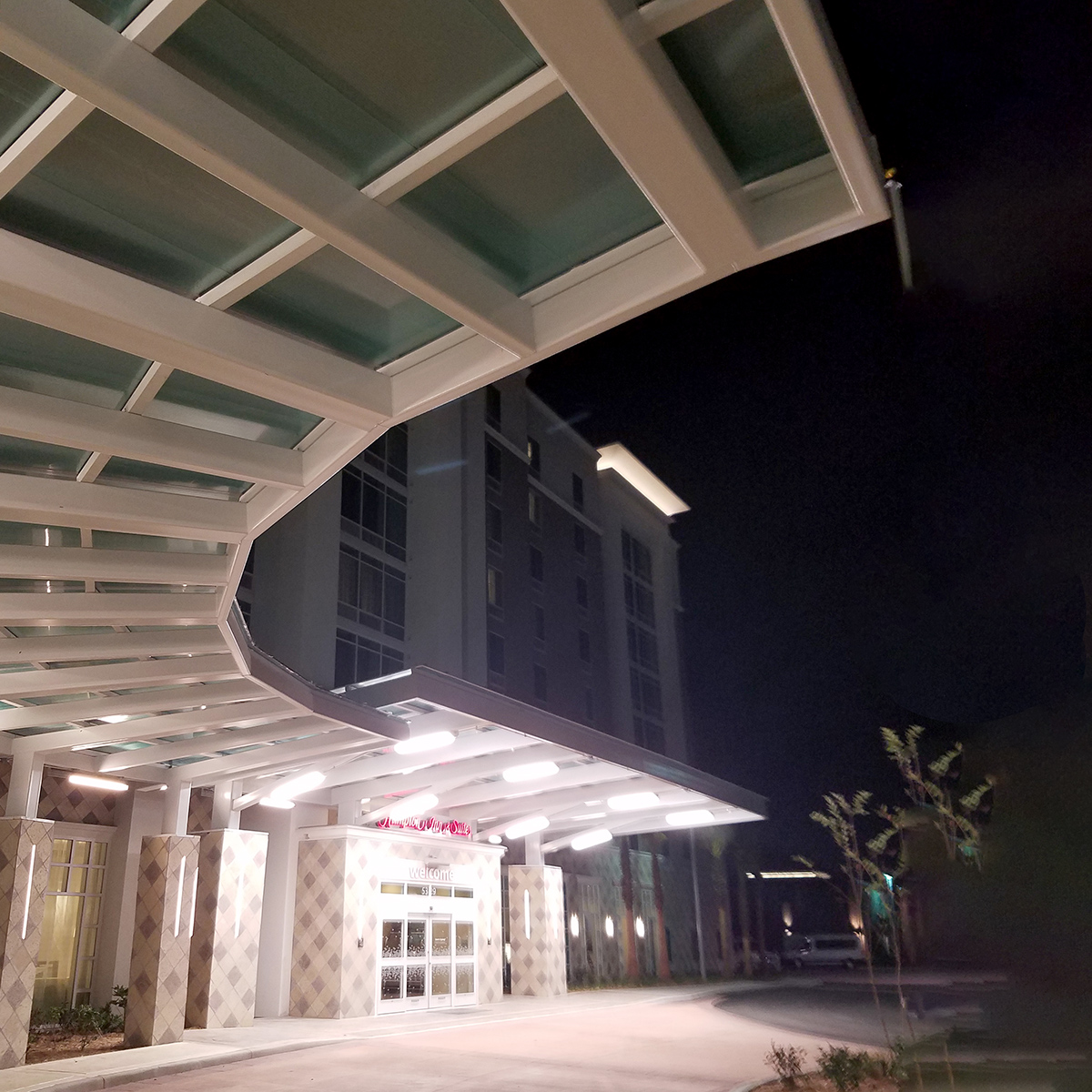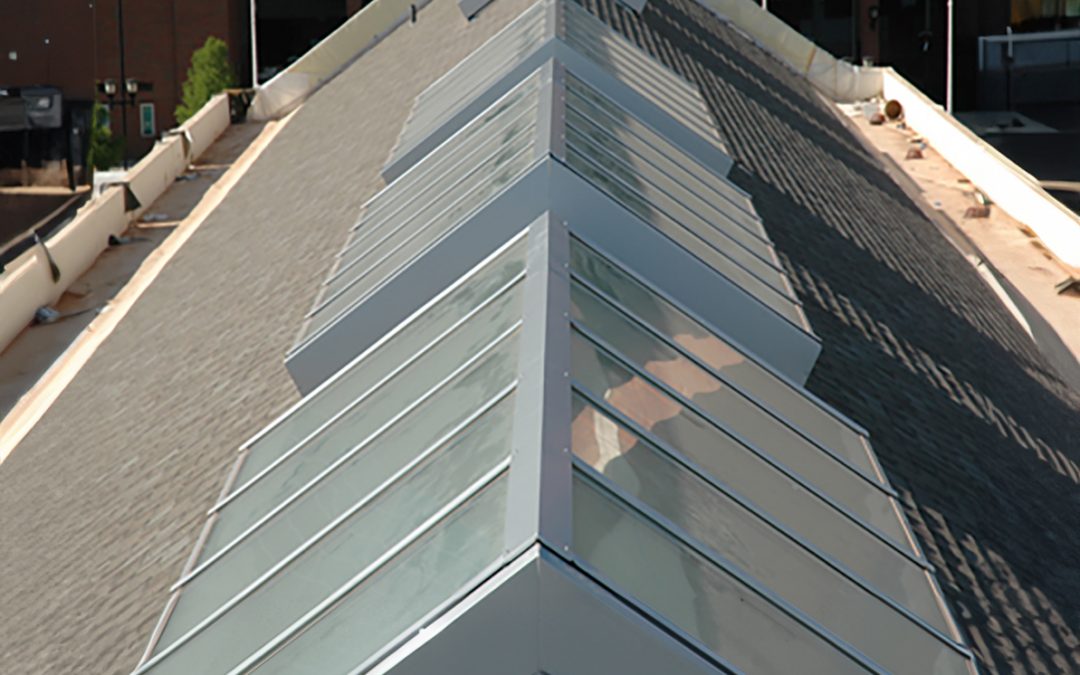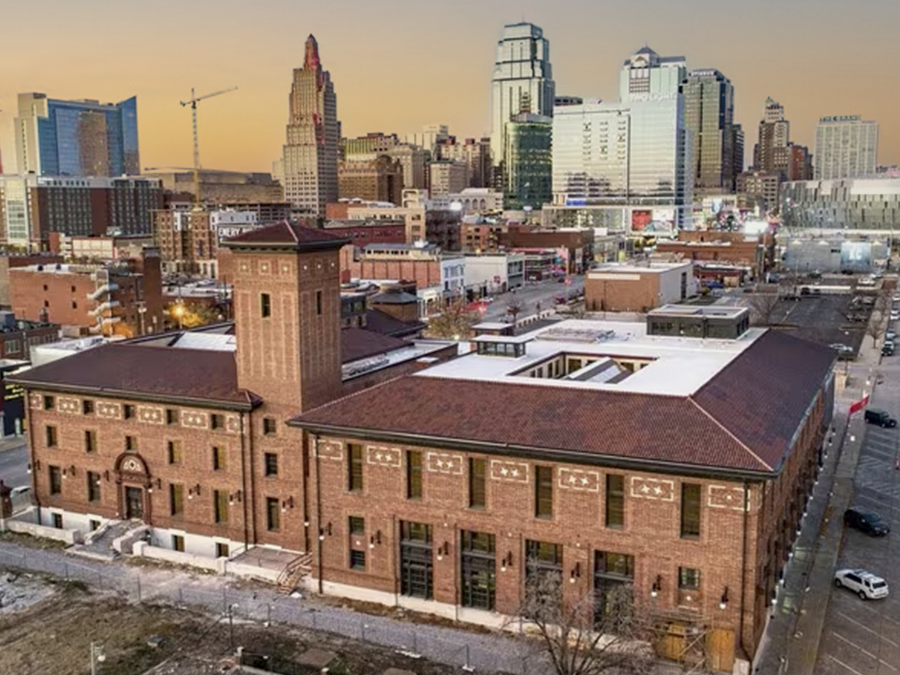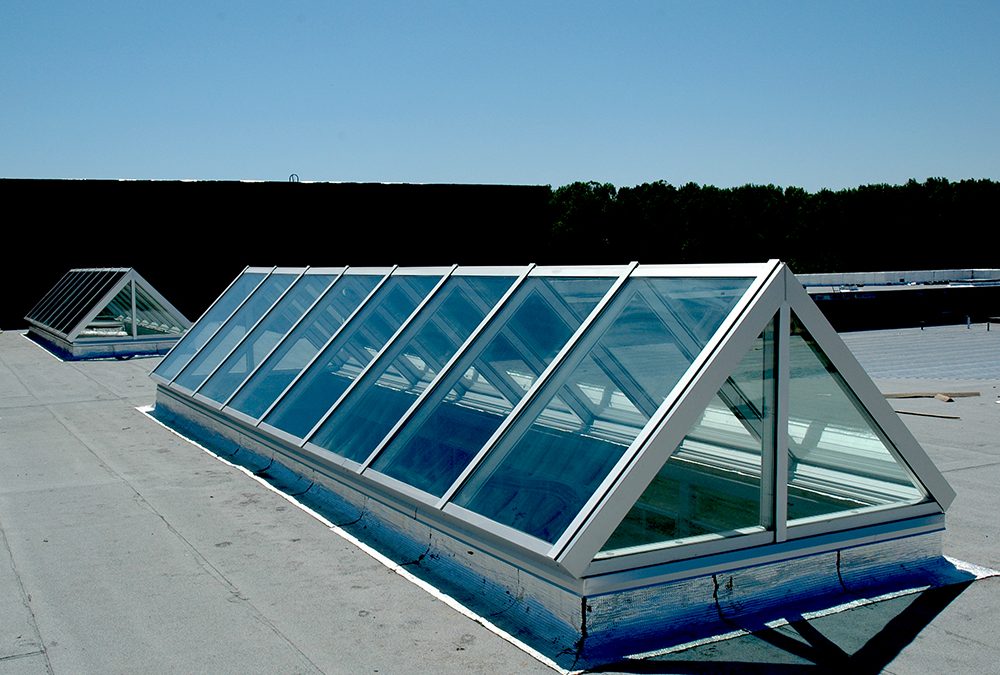Polycarbonate Glazing: A Game Changer for Architecture

Polycarbonate glazing provides the beauty of natural daylight yet is more cost-effective.
Polycarbonate is a strong, lightweight plastic material that has many uses in architecture and construction. It is known for its durability and transparency and is often used as a substitute for glass in building projects. Some of the key advantages of using polycarbonate in construction include its resistance to impact, UV radiation blocking, and extreme temperatures, as well as its ease of shaping and installation.
In recent years, advances in technology have made it possible to produce polycarbonate with improved properties, such as increased fire resistance and improved insulation. These developments have made polycarbonate an increasingly popular material for use in a wide range of construction projects, from windows and skylights to walls and even large airplane hangar doors.
Many manufacturers, Crystal Structures included, rely on polycarbonate as an option for rigid glazing in a variety of applications due to the ease of handling during installation and cost-effectiveness as a rigid covering.
While we do have access to a variety of polycarbonate products, we’ve started working with Palram for glazing on canopy applications and have been pleased with the results.
A few uses for polycarbonate products include:
- Using polycarbonate sheets as roofing material for a greenhouse or conservatory to allow sunlight to pass through while providing protection from the elements.
- Using polycarbonate panels as skylights in a commercial building provides natural light and reduces energy costs.
- Incorporating polycarbonate into the design of a transparent wall or partition to create a unique and modern aesthetic.
- Using polycarbonate sheets as a protective barrier for outdoor seating areas or balconies to provide shelter from the rain and wind.
- Using polycarbonate panels as a security barrier in a public building or as a protective shield for windows in high-risk areas.

Palram, our preferred polycarbonate source
The Palram company was founded in 1963 and became a public company in 1994. They offer solid polycarbonate panels in a range of thicknesses up to 12mm with 3mm, 4mm, and 6mm thicknesses being the most common. For any given thickness, the “U” value of Palram panels is lower than that of glass.

A few of our projects completed with Palram products include:
- The Archer Hotel, Florham NJ
- Derby North Middle School, Derby, KS
- The Hampton Inn, Tampa, FL
- Heartland Cardiology, Wichita KS
- Thirsty Dog restaurant, Cleveland OH
- SAS Analytics, Cary, NC
- Stone Creek Elementary, Derby, KS
- MAPS Senior Wellness Center, Oklahoma City, OK
- Holiday Inn, Clarksville, TN
- Springhill Suites, Lakeland FL
- Veteran’s Affairs Medical Center, Charlotte NC
Here’s why we recommend Palram polycarbonate products:
- If your project calls for a low-slope canopy, you might be concerned about drainage or how the glazing will stand up to mother nature. With Palram’s standing-seam monolithic polycarbonate, Sunglaze, and standing-seam Multiwall, Sunpal, there’s no problem with standing water, snow, or ice damaging the polycarbonate. This makes Palram a perfect solution for low-slope applications.
- The Palram product doesn’t easily crack, fade, or yellow. Palram’s polycarbonate products have been available for more than 50 years and with co-extruded UV protection integral to the panel they come with industry-best warranties for yellowing and light transmission.
- And hail doesn’t make a dent.
According to Phillip Lahr, Palram’s Business Unit Manager,
“Polycarbonate has incredible impact resistance which is why it’s used in everything from motorcycle helmets to windshields and canopies to curtain walls. You can count on Palram’s polycarbonate solutions to provide premium cost-effective protection. When it comes to functional, stylish, and flexible design polycarbonate is the best solution in almost every instance.”
A couple of names to know: Sunglaze & Sunpal
Sunglaze is a monolithic standing-seam polycarbonate system that can adapt to any project, large or small. It provides an elegant appearance while being low maintenance and sustainable. The Sunglaze standing seam technology is gasket-free, with no through fastening to ensure a water-tight installation. It’s engineered to allow for wide spans with increased loading capacity and can be utilized in both flat and curved designs.
“As one of only 2 monolithic systems available, we like the results we see when projects are built using Sunglaze,” said Craig Andersen, Crystal Structures national sales manager.
Sunpal is a multiwall standing-seam polycarbonate system that can be used in a variety of near-flat or curved applications. Architects who want to include daylighting without the glare of full sun find that Sunpal provides diffused light with a lightweight, leak-proof, sustainable product. Despite its lightweight, Sunpal can withstand high winds and live loads. Sunpal is designed to accommodate thermal expansion and contraction. It’s ideal for long-term use in virtually every type of construction.
Finally, there’s the cost factor. When planning canopies, skylights, and windows, glass is usually the glazing of choice. However, projects on a budget will find that the look of Palram glazing provides the beauty of natural daylight yet is more cost-effective. The cycle for replacing polycarbonate versus glass is going to be longer as well which also results in cost savings.
“The ability to provide samples and test results to architects in the design stage also makes working with Palram easy,” Craig added.
More From This Category

The 4 Types of Ridge Skylights
Four types of ridge skylightsRidge skylights combine aesthetic appeal with functional...

Reviving a Kansas City Landmark: The Historic KC Star Building
NEW PROJECT ANNOUNCEMENT May 2023, #25405 4 Skylights CSI: 08 63 00 Architect: Generator Studio,...

Skylight Maintenance 101: Ensuring Longevity and Performance
A well-designed and properly maintained commercial skylight can typically last anywhere between 15...

